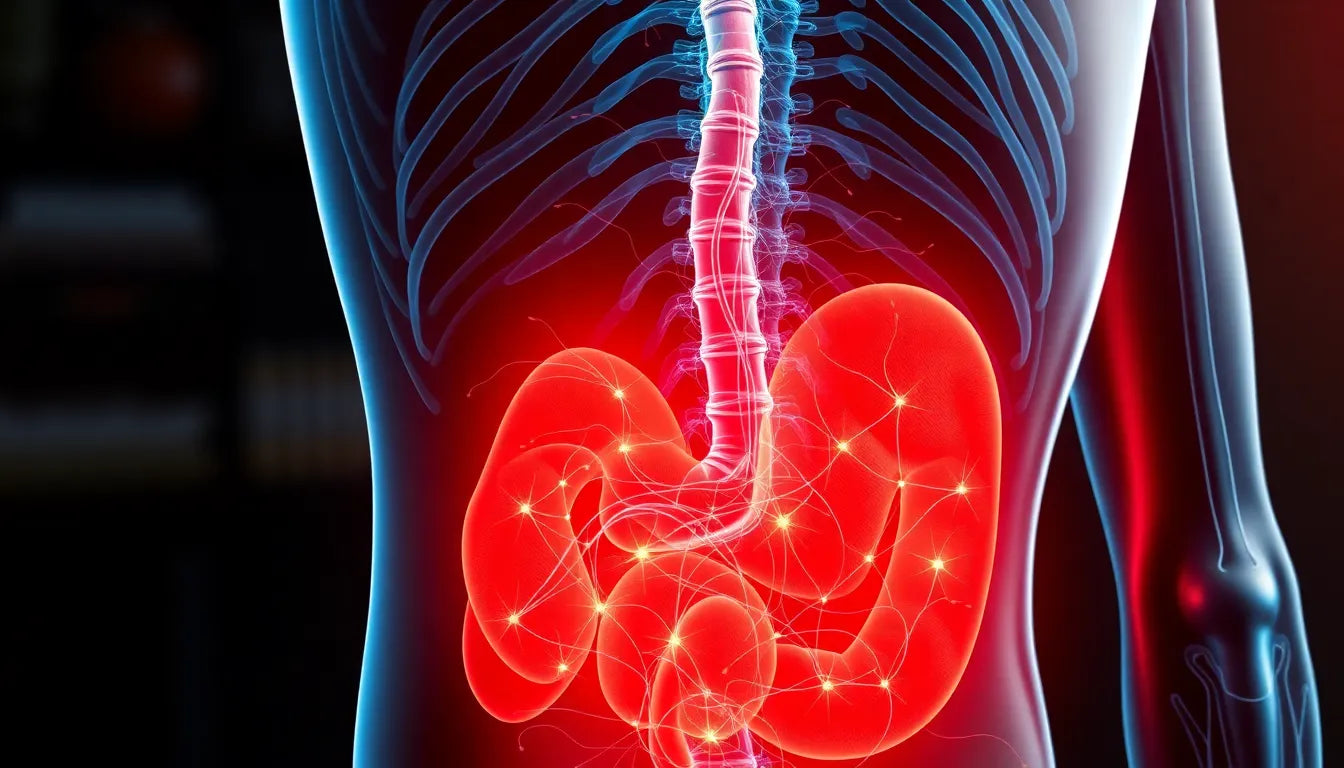Experiencing a combination of headaches, nausea, and neck pain is more common than one might think. These symptoms often occur together due to interconnected physiological and lifestyle factors that affect our bodies in various ways. Whether it's a tension headache stemming from a long day at the desk or nausea accompanying a migraine, these issues can significantly impact daily life and productivity. Understanding and addressing the root causes of these symptoms is crucial for finding relief and improving quality of life.
interconnected symptoms: headaches, nausea, and neck pain
Headaches, nausea, and neck pain often share common triggers and can exacerbate each other, creating a cycle of discomfort. For instance, muscle tension in the neck, often due to poor posture or stress, can lead to headaches known as cervicogenic headaches. These headaches are directly linked to neck issues and can also cause nausea. Similarly, migraines, a type of headache disorder, frequently present with both neck pain and nausea, making daily activities challenging.
The impact of these symptoms extends beyond physical discomfort. They can affect concentration, mood, and overall well-being, making it difficult to focus on work or enjoy leisure activities. This underscores the importance of identifying the underlying causes and exploring effective treatment options.
relatable scenarios and potential relief
Imagine finishing a long day at work, only to be greeted with a throbbing headache, a queasy stomach, and a stiff neck. This scenario is all too familiar for many, especially those with demanding jobs or high-stress levels. The good news is that relief is possible. By understanding the causes and connections between these symptoms, individuals can take proactive steps to alleviate their discomfort.
Exploring treatment options, such as ergonomic adjustments, stress management techniques, and proper posture, can make a significant difference. Additionally, consulting healthcare professionals for personalized advice can help tailor a treatment plan that addresses specific needs and lifestyle factors.
In conclusion, while the combination of headaches, nausea, and neck pain can be debilitating, understanding the connections and addressing the root causes can lead to effective relief. By taking a comprehensive approach that considers both physiological and lifestyle factors, individuals can reclaim their comfort and productivity.
understanding the connection between symptoms
The interplay between headaches, nausea, and neck pain is often rooted in muscle tension and cervicogenic headaches. Muscle tension, particularly in the neck and shoulder area, is a prevalent cause of these symptoms. When the muscles in the neck become tight, they can irritate nerves that lead to the head, causing headaches that are often accompanied by nausea. These are known as cervicogenic headaches, which originate from neck issues and can mimic migraine symptoms.
Migraines, another common cause of this symptom triad, are neurological conditions that can be debilitating. They often present with severe headaches, sensitivity to light and sound, and nausea. Migraines can also cause neck stiffness or pain due to the tension and stress they place on the body. Recognizing these symptoms and understanding their interconnection is vital for effective management and relief.
physiological and behavioral causes
Several physiological factors contribute to the development of these symptoms. Poor posture, especially from prolonged sitting or improper ergonomics at work, can lead to muscle strain and tension in the neck. This tension can trigger headaches and exacerbate feelings of nausea. Repetitive movements, such as those performed in certain occupations, can also contribute to muscle fatigue and tension.
Behavioral factors play a significant role as well. Stress is a major contributor to muscle tension and headaches, as it causes the body to release stress hormones that can lead to physical symptoms. Sedentary lifestyles, where individuals spend long periods sitting without breaks, can further exacerbate these issues. Understanding these triggers is the first step in addressing and mitigating their effects.
serious conditions to consider
While most cases of headaches, nausea, and neck pain are benign and manageable with lifestyle changes and treatments, it's crucial to be aware of more serious conditions. For instance, meningitis, an inflammation of the protective membranes covering the brain and spinal cord, can present with sudden onset of severe headache, fever, nausea, and neck stiffness. If these symptoms occur, especially if they are accompanied by other signs like confusion or a rash, immediate medical attention is necessary.
Another serious condition to consider is a cervical disc herniation, where the discs in the neck press on nerves, causing pain that can radiate to the arms and hands, along with headaches and nausea. Recognizing when symptoms are beyond normal discomfort and require professional evaluation is key to ensuring proper treatment and care.
visualizing causes and effects
To better understand the common causes and effects of headaches, nausea, and neck pain, a visual summary can be incredibly helpful. Infographics or tables that outline the relationship between poor posture, muscle tension, stress, and these symptoms can provide a clear and concise overview. Such visuals can also highlight the importance of ergonomic adjustments, regular breaks, and stress management techniques in preventing and alleviating symptoms.
By recognizing the interconnected nature of these symptoms and their triggers, individuals can take proactive steps to minimize their impact. Whether through lifestyle adjustments, targeted exercises, or seeking professional guidance, understanding these connections is essential for finding relief and improving overall well-being.
treatment and relief options for headaches, nausea, and neck pain
When dealing with the persistent discomfort of hovedpine, kvalme, and ondt i nakken, a variety of treatment approaches can offer relief. Starting with conservative treatments, physiotherapy and massage are effective in reducing muscle tension and improving posture, which can alleviate symptoms. Regular sessions with a physiotherapist can help in identifying specific muscle groups that need attention and developing a tailored exercise regimen to strengthen and relax these areas.

Men's Posture Shirt™ - Black
Improves posture and can relieve neck, shoulder, and back pain; features patented NeuroBand™ technology.

Women's Posture Shirt™ - Black
Designed to improve posture, relieve pain and tension; features patented Neuroband™ technology.
Ergonomic adjustments in the workplace or at home can also play a crucial role. Ensuring that your desk and chair are set up to support proper posture can prevent muscle strain that leads to headaches and neck pain. Additionally, incorporating regular breaks and stretching exercises into your routine can help maintain muscle flexibility and reduce tension.
medical interventions and an integrated approach
For those experiencing more severe symptoms, medical interventions may be necessary. Over-the-counter pain relief medication and anti-inflammatory drugs can provide short-term relief for intense pain. However, it is essential to consult with a healthcare professional to determine the appropriate medication and dosage for your specific condition.
An integrated approach that combines medical, physical, and behavioral therapies can be particularly effective. This multidisciplinary strategy not only addresses the immediate symptoms but also targets the underlying causes, providing a more comprehensive solution. Working with healthcare providers to develop a personalized treatment plan can ensure that all aspects of your well-being are considered, leading to more sustainable relief.
practical tips for prevention and daily habits
Preventing the recurrence of these symptoms involves adopting healthy daily habits. Simple ergonomic tips, such as adjusting your computer screen to eye level and using a chair with proper lumbar support, can make a significant difference. Additionally, incorporating small, regular exercises or stretches into your routine can help keep muscles relaxed and prevent tension from building up.
Stress management techniques, such as mindfulness meditation or deep breathing exercises, can also be beneficial. Reducing stress not only helps in preventing muscle tension but also improves overall mental health, which can positively impact physical symptoms. By making these small changes, you can significantly reduce the frequency and intensity of hovedpine, kvalme, and ondt i nakken.
frequently asked questions
What should I do if my symptoms persist despite treatment?
If your symptoms continue despite trying various treatments, it is crucial to seek professional medical advice. Persistent symptoms may indicate an underlying condition that requires specialized care, and a healthcare provider can offer further diagnostic testing and treatment options.
Can headaches and neck pain be prevented with lifestyle changes?
Yes, lifestyle modifications can significantly reduce the frequency and severity of headaches and neck pain. By addressing factors such as posture, stress levels, and ergonomic setups, you can create an environment that minimizes the risk of these symptoms. Regular exercise and stress management are also key components in prevention.
When should I be concerned about my symptoms?
It is essential to be aware of red flags that warrant immediate medical attention. If you experience severe or sudden onset of symptoms, especially if accompanied by fever, confusion, or a rash, you should seek medical care promptly. These may be signs of a more serious condition that requires urgent treatment.
Kilder
- Aarhus Osteopati. ”Nakkesmerter.”
- Fit og Sund Fysioterapi. ”Ondt i nakken – har du udstråling?”
- Dansk Selskab for Fysioterapi. ”Hovedpine og nakkesmerter.”
- Nordthy Fysioterapi. ”Ondt i nakken og hovedpine.”
- Netdoktor. ”Hovedpine: Årsager og gode råd.”
- Sundhed.dk. ”Hovedpine efter nakke- eller hovedtraume.”


















